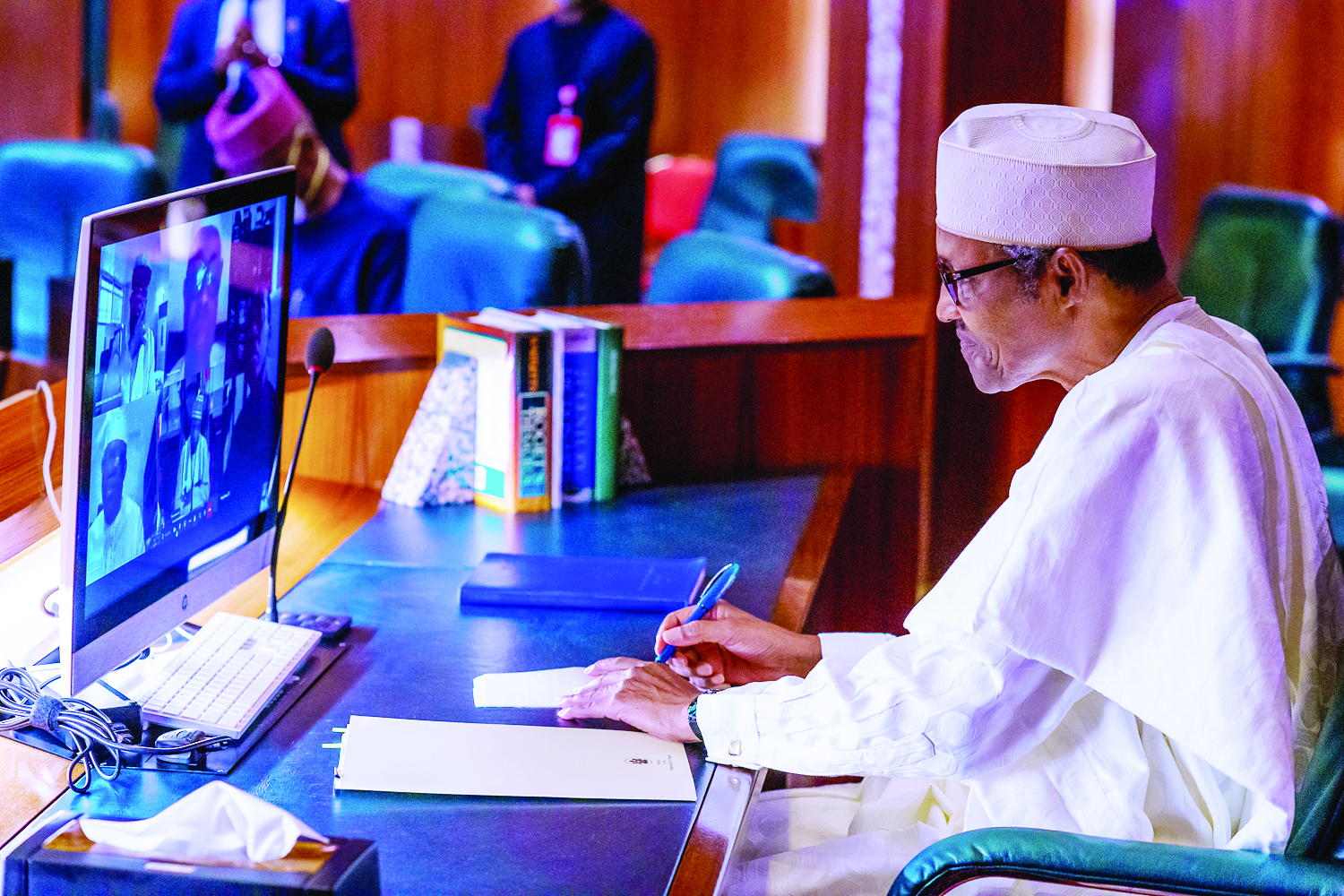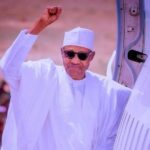President Buhari’s Executive Order Number 10, signed on May 22, 2020, in which he sought to grant financial autonomy to the 36 state Houses of Assembly and the judiciary, has been praised by some, but condemned by others.
Part of the Executive Order states:
“The Accountant-General of the Federation shall by this Order and such any other Orders, Regulations or Guidelines as may be issued by the Attorney-General of the Federation and Minister of Justice, authorise the deduction from source in the course of Federation Accounts Allocation from the money allocated to any State of the Federation that fails to release allocation meant for the state legislature and state judiciary in line with the financial autonomy guaranteed by Section 121(3) of the Constitution of the Federal Republic of Nigeria 1999 (as Amended).”
The presidency claims the Executive Order was aimed at strengthening the financial autonomy of the judiciary and legislature at the state level.
Until the Buhari presidency, Executive Orders were not part of the instruments of governance in the country because none of Buhari’s predecessors in office – Obasanjo, Yar’Adua and Jonathan used it.
Ironically the first Executive Order by the Buhari presidency – Executive Order No. 001 of 2017 was initiated by Professor Yemi Osinbajo as Acting President and was on the ‘Promotion of Transparency and Efficiency in the Business Environment’.
Though the Buhari presidency has so far issued ten Executive Orders in five years, compared to US presidents, we can say, in street language, that “he hasn’t even started”.
For instance, Bill Clinton, George W Bush, Barrack Obama and Donald Trump issued 364, 291, 276 and 151 Executive Orders respectively.
Buhari’s use of Executive Orders raises a number of fundamental issues:
One, an Executive Order is an order on how agents or agencies of the executive arm of government should act or utilise the resources under their care.
Executive orders fall under the broader umbrella term of ‘executive actions’ which also include memorandum and press releases.
In the US, it is a requirement since 1907 that Executive Orders are numbered and be published in the Federal Register, the daily journal of the US government. Buhari has accordingly numbered his Executive Orders.
In Nigeria, Executive Orders have to be published in the government’s official daily journal (or ‘gazetted’ as we say).
The President can use memoranda, directives and even public press releases to clarify or modify executive orders where there is no requirement for it to be in any particular form.
In the US, both Executive Orders and Memoranda have the ‘force of law’ but while it is a requirement that Executive Orders are numbered and published in the Federal Register, there is no such requirement for Memoranda, making the latter at least a step below the former.
In Nigeria, the expression, Executive Order, is neither defined in the 1999 Constitution nor is it interpreted in any legislation of the National Assembly or House of Assembly of any state.
Two, a very important question is why are Executive Orders controversial even in the USA, where they have been used by every U.S. president (except William Henry Harrison, the ninth US President.
Franklin Delano Roosevelt still holds the record of issuing 3,721 Executive Orders).
A major reason why it remains controversial is that it strikes at the heart of the separation of power principle that is a key defining feature of the presidential system of government.
Under this principle, the legislature makes the law, which the executive implements while the judiciary interprets the law.
Each of the three centres of power guards its ‘sphere of influence’ jealously.
But there are certain overlaps among them that often create tension in their relationship.
For instance, though the legislature makes the law, it also performs executive functions through its oversight functions over the other two arms, and can remove the president from office through impeachment.
It can also cause any functionary of the government to appear before it or even exert pressure for an official of the government to be sacked by the President.
In the same way, while the judiciary in principle should be occupied with interpreting the laws, in practice it could also contribute to the corpus of laws through the doctrine of judicial precedents.
Essentially therefore, the legislature often sees Executive Orders as the executive arm of government trying to appropriate its functions.
With Buhari, his use of Executive Orders evokes memories of his past as a brutal dictator, making some people believe it will be too dangerous to give him even the benefit of the doubt.
Three, an important question is whether Executive Orders mean that the President is trying create new laws or change the constitution through the back door.
Executive Orders have ‘the force of law’.
In the US, Executive Orders are recorded in the Federal Register and are considered binding, but they are subject to legal review.
In Nigeria, we may recall the kerosene subsidy controversy.
The issue of legality was thrown up when the then governor of the Central Bank of Nigeria, Sanusi Lamido Sanusi, alleged that $20bn of the $67bn from crude oil sales payable to the Federation Account could not be accounted for by the Nigeria National Petroleum Corporation (NNPC).
In its defence, the NNPC claimed that it used a good chunk of the alleged missing money in paying for subsidies on kerosene.
Sanusi argued that there ought not to have been subsidy at all on kerosene because the late President Yaradua had issued two memos on June 9, and October 19, 2009 respectively ordering the removal of subsidy on kerosene for 2009, 2010 and 2011.
Supporters of the NNPC at the time argued that since the memoranda were not gazetted, they did not qualify as Executive Orders and, therefore, did not have the force of law.
Probably relying on this, the NNPC denied receiving any presidential order to stop the payment of subsidy.
Four, given the suspicion that the Nigerian Governors Forum might go to court to challenge Executive Order No.10, a key question is whether an Executive Order can be overturned?
There are three possible ways to overturn an Executive Order (none of which is easy): one option is that the President who issued the Executive Order can revoke, modify, or supersede it with another Executive Order.
Another option is that the legislature (National Assembly) can revoke, modify or supersede an Executive Order if the president was believed to have acted outside the law.
A third option is that the courts can declare an Executive Order illegal or unconstitutional.
My feeling is that if the NGF challenges Buhari’s Executive Order No. 10 in court, it will be a PR disaster for the governors who are believed to hijack local government allocations and to turn both the legislature and the Judiciary in their states into rubber stamps through their power of the purse.
Five, an Executive Order could be undermined at the level of implementation.
For instance, though one of President Obama’s first acts as president was to sign an Executive Order closing the Guantanamo Bay Detention Centre, the order was ignored.
In the same vein, Sally Yates, the US Deputy Attorney General (who was appointed by Barrack Obama), instructed the US Justice Department (the equivalent of our Ministry of Justice) not to defend Trump’s new immigration policies in court because she was not convinced that the order was lawful or consistent with her responsibility to stand for what she considers right.
She was fired immediately by Trump.
Additionally executive orders that require financial expenditures will have to grapple with the fact that the legislature has to appropriate such funds.
In fact our constitution already made provisions for financial autonomy for the three arms of government at the state.
Buhari’s Executive Order No. 10 may therefore be seen more as a directive to the MDAs or subtly reminding restructuring advocates that restructuring has both horizontal and vertical dimensions.
Six, does Buhari, who is routinely accused of not respecting court orders, have the moral authority to force state governors to respect the separation of power principle?
This will remain a controversial question. But the point is that much of what we call democracy in the country today obtains only at the federal/national level.
At the state level, Buhari’s Executive Order No. 10 calls attention to the impunities at the states where most of the Governors carry on as emperors.
Not only are they routinely accused of seizing the allocation of the local governments, the party of the state governor is guaranteed to win all seats in any local government election.
It is also rare for a State House of Assembly to go against the wishes of the governor or for the state high court to pass a judgment against the state.
These are important issues of horizontal restructuring that ought to be part of the whole restructuring debate.

 Join Daily Trust WhatsApp Community For Quick Access To News and Happenings Around You.
Join Daily Trust WhatsApp Community For Quick Access To News and Happenings Around You.

